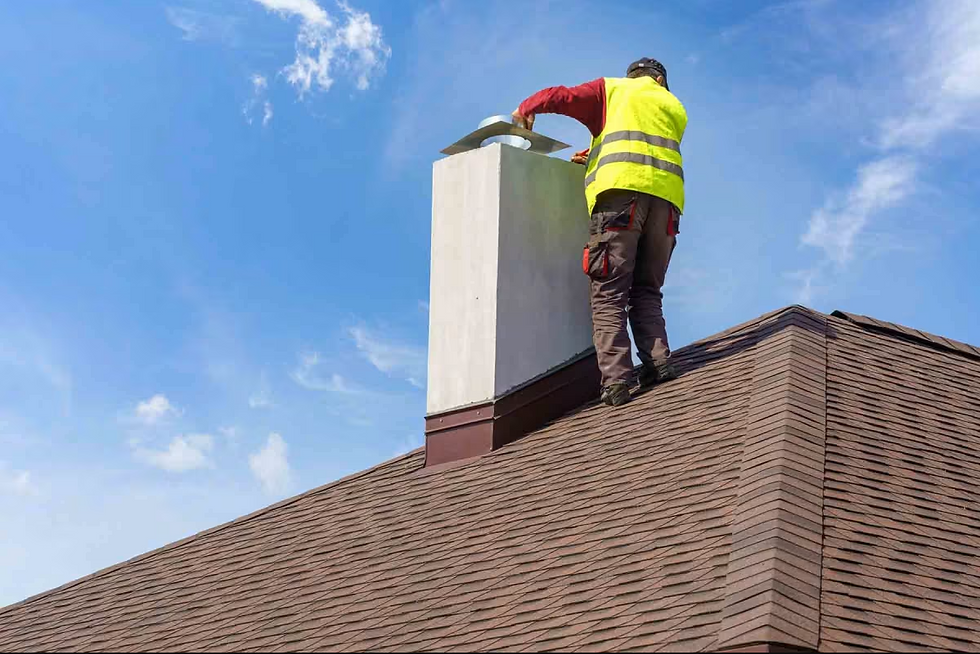Structural Inspection vs Home Inspection | Key Differences & Insights
- Growth Pro
- 35 minutes ago
- 3 min read
When it comes to structural inspection vs home inspection, understanding the differences is crucial for property owners and buyers. A home inspection provides a broad overview of a property’s general condition, covering visible systems such as electrical, plumbing, HVAC, and roofing. In contrast, a structural inspection is a detailed evaluation performed by a licensed structural engineer, focusing on foundation stability, load-bearing elements, and potential safety hazards. Choosing the right type of inspection ensures proper hazard detection, accurate structural analysis, and a reliable inspection report for maintenance or real estate decisions.

When it comes to structural inspection vs home inspection, understanding the distinctions is essential for homeowners, buyers, and real estate professionals. While both inspections assess a property, their scope, purpose, and level of detail differ significantly. Choosing the right type of inspection can save money, prevent hazards, and ensure foundation stability and overall safety.
Primary Differences: Structural Inspection vs. Home Inspection
A. Focus, Scope, and Professional
Structural Inspection
Performed by: Licensed structural engineer
Scope: In-depth evaluation of structural integrity
Focus Areas: Load-bearing elements like foundation, beams, columns, roof structure, and floor joists
Purpose: Diagnose structural concerns, assess safety, and provide detailed measurements
Report Outcome: Thorough inspection report detailing issues, recommended repairs, and safety assessments
Home Inspection
Performed by: Licensed home inspector
Scope: Broad, surface-level review of a home's general condition
Focus Areas: Visible systems and components, such as electrical system review, plumbing inspection, roof condition, insulation, and general structural aspects
Purpose: Provide an overview of potential maintenance or repair needs, often during real estate transactions
Depth of Analysis: Surface-level evaluation
Key Feature Comparison
Feature | Home Inspection | Structural Inspection |
Performed by | Licensed home inspector | Licensed structural engineer |
Scope | General system and components | Structural integrity and load-bearing elements |
Purpose | Identify visible issues for maintenance/sale | Diagnose structural concerns and safety |
Common Use | Real estate transactions | Structural concerns, foundation issues, severe cracking |
Report Outcome | Overview of home condition and minor repairs | Detailed report on structural safety and repairs |
Cost | More affordable | Typically more expensive |
When to Hire a Structural Engineer
Structural engineers are essential when serious building evaluation and fault identification are required. Situations include:
A. Suspected Structural Damage
Visible cracks in walls, ceilings, or foundation
Doors or windows sticking or floors that slope
Bowing or leaning walls
Any signs of foundation movement
B. Project and Damage Assessment Needs
Major renovations or additions affecting load-bearing walls
Damage from storms, floods, fires, termites, or water
C. Legal and Expert Requirements
Expert opinion or state-stamped inspection report for insurance or litigation
When a home inspector identifies potential structural issues
Diagnosing the cause and extent of problems and designing solutions
Signs of Foundation Damage Requiring Assessment
A structural engineer is needed when any of the following hazard detection signs appear:
Significant Cracks: Wider than 1/4 inch, horizontal, diagonal, or stair-step cracks
Misalignment: Sticking or misaligned doors and windows
Uneven Surfaces: Sloping, sagging, or bouncing floors
Wall Distress: Bowing, leaning, or bulging walls
Gaps: Around windows, doors, or between walls and ceilings
Water Issues: Moisture or water intrusion in basements or crawl spaces
Separation: Detachment of foundation from floor framing system
Roof/Chimney Problems: Sagging roofs or chimney separation
How Engineers Determine Active Foundation Settlement
A. Diagnostic Process
Visual Inspection: Look for cracks, gaps, and unevenness
Measurement Techniques: Specialized tools to measure displacement over time
B. Common Measurement Methods
Physical Markers: Settlement plates or markers on foundation or soil
Surveying: Periodic measurements using surveying instruments
Continuous Monitoring: Wireless settlement sensors, strain gauges, tilt meters
Geotechnical Tools: Inclinometers for soil displacement, piezometers for water pressure
C. Final Assessment
Review measured data with structural observations
Distinguish between active settling and stable conditions
Predict future behavior and recommend remedial actions
Understanding structural inspection vs home inspection helps homeowners and buyers make informed decisions about property safety and maintenance. While home inspections provide a general overview, structural inspections offer a detailed structural analysis, focusing on foundation stability and overall building integrity. Hiring the right expert ensures hazards are detected early, repairs are properly recommended, and your property remains safe for years to come.

.png)



Comments